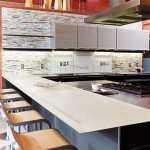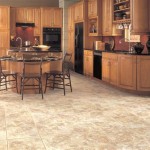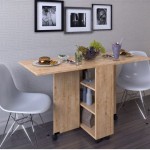How To Organize Kitchen Cabinets As Pantry Storage Ideas
The kitchen, often considered the heart of the home, relies heavily on efficient storage solutions to function smoothly. Optimizing cabinet space to serve as pantry storage can significantly enhance a kitchen's organization and accessibility. This article explores strategies for transforming standard kitchen cabinets into effective pantries, maximizing space and improving the overall culinary experience.
Assessing Existing Cabinet Space and Inventory
Before embarking on an organizational overhaul, a thorough assessment of the existing cabinet space is crucial. This involves measuring the dimensions of each cabinet, including height, width, and depth. Knowing these measurements allows for the selection of appropriate storage containers and organizers. Moreover, a complete inventory of existing pantry items is necessary. This process involves removing all items from the cabinets, checking expiration dates, and categorizing the remaining products. Common categories include canned goods, dry goods (flour, sugar, pasta), spices, baking supplies, and snacks. Discarding expired or unwanted items is a vital first step in decluttering and creating space for better organization.
After the inventory is complete, analyzing the frequency of use for each item is essential. Items used daily or frequently should be placed in easily accessible locations, while less frequently used items can be stored higher up or in the back of cabinets. This prioritization ensures that frequently needed items are within easy reach, minimizing the need to rummage through cabinets.
The assessment should also consider any existing hardware within the cabinets. Are the shelves adjustable? Are there any existing dividers or organizers? Understanding the current configuration allows for more informed decisions about adding or modifying storage solutions. If shelves are not adjustable, consider whether it's feasible to add additional shelves or reposition existing ones to create more efficient vertical space utilization.
Implementing Storage Solutions for Maximized Space
Once the initial assessment is complete, the next step involves implementing storage solutions designed to maximize cabinet space and improve organization. Several options are available, ranging from simple containers to more complex organizational systems.
One of the most effective solutions is the use of clear, airtight containers. These containers come in various sizes and shapes, allowing for the storage of a wide range of items. Clear containers make it easy to identify contents at a glance, reducing the need to open multiple containers to find a specific ingredient. Airtight seals help to keep food fresh for longer, preventing spoilage and reducing food waste. These containers are particularly useful for storing dry goods such as flour, sugar, cereal, and pasta.
Shelf dividers are another valuable tool for organizing kitchen cabinets. These dividers create distinct sections within a cabinet, preventing items from toppling over and maximizing vertical space. Shelf dividers are particularly useful for organizing stacks of plates, bowls, or baking sheets. They can also be used to separate different types of food items, such as canned goods from snacks. Adjustable shelf dividers offer even greater flexibility, allowing for customization based on the size of the items being stored.
Pull-out shelves are a more advanced storage solution that can significantly improve accessibility, especially in deep cabinets. These shelves slide out, allowing for easy access to items stored at the back of the cabinet. Pull-out shelves are particularly useful for storing heavy items, such as pots and pans or large cans of food. They can also be used to create a dedicated spice rack or to store frequently used cooking tools. Installation of pull-out shelves may require some basic carpentry skills, but the improved accessibility often justifies the effort.
Lazy Susans, also known as turntables, are an excellent option for corner cabinets, which are often difficult to access. These rotating shelves allow for easy access to items stored at the back of the cabinet. Lazy Susans are particularly useful for storing spices, condiments, or small containers of food. They can also be used to organize cleaning supplies or other household items. Multi-tiered Lazy Susans can further maximize vertical space utilization.
Over-the-door organizers are a simple and cost-effective way to add extra storage to kitchen cabinets. These organizers typically consist of a series of pockets or shelves that hang over the cabinet door. They are particularly useful for storing small items such as spices, cleaning supplies, or snacks. Over-the-door organizers can also be used to store pot lids or cutting boards. However, it is important to ensure that the organizer does not interfere with the closing of the cabinet door.
Maintaining Organization and Accessibility
Once the kitchen cabinets have been organized, maintaining that organization is essential to prevent clutter from accumulating. Regular maintenance involves several key practices.
The first practice is to implement a "first in, first out" (FIFO) system. This system ensures that older items are used before newer ones, preventing food from expiring. When restocking pantry items, place the older items in front of the newer ones. This simple practice can significantly reduce food waste and ensure that ingredients are always fresh.
Regularly decluttering the cabinets is another essential maintenance practice. This involves periodically removing all items from the cabinets, checking expiration dates, and discarding any expired or unwanted items. This process should be done at least once a month to prevent clutter from accumulating. During the decluttering process, also take the opportunity to wipe down the shelves and containers to remove any spills or crumbs.
Re-evaluating the layout and storage solutions periodically is also important. As needs and preferences change, the optimal organization of the kitchen cabinets may also change. Consider whether the current organization is still meeting the needs of the household. Are there any areas that are particularly cluttered or difficult to access? Are there any new storage solutions that could improve efficiency? Making adjustments as needed ensures that the kitchen cabinets remain organized and accessible over time.
Labeling containers and shelves can further enhance organization and accessibility. Clear labels make it easy to identify the contents of each container and the location of different items. Labels can be handwritten, printed, or created using a label maker. Consistent labeling throughout the kitchen cabinets creates a visually appealing and easily navigable storage system.
Involving all members of the household in the organization and maintenance process can also improve long-term success. Explain the organizational system to everyone and encourage them to follow it. This includes putting items back in their designated locations and notifying others when supplies are running low. By working together, the entire household can contribute to maintaining an organized and efficient kitchen.
Investing in durable and high-quality storage solutions is essential for long-term success. Cheap or flimsy containers may break easily or not seal properly, leading to food spoilage and frustration. High-quality containers and organizers, while potentially more expensive upfront, will last longer and provide better performance over time. Consider investing in storage solutions that are specifically designed for kitchen use and that are known for their durability and functionality.
Consider the accessibility needs of all users when organizing kitchen cabinets. If there are individuals with mobility issues, ensure that frequently used items are stored within easy reach. Avoid storing heavy items on high shelves, as this can pose a safety risk. Use assistive devices such as step stools or reacher grabbers to make it easier to access items stored in higher cabinets. Creating an inclusive and accessible kitchen ensures that everyone can participate in meal preparation and enjoy the culinary experience.
By implementing these strategies, any kitchen can be transformed into a well-organized and efficient space. Turning standard cabinets into functional pantries will result in a more pleasant and productive cooking environment.
:strip_icc()/NEATLITTLENEST1-f37d50a35cbe4561a7e9be0a0221506f.jpg?strip=all)
20 Best Small Pantry Organization Ideas You Have To Try

How To Organize A Pantry Best Organizers For Kitchen Storage Of 2025

How To Organize Your Kitchen Cabinets And Pantry Feed Me Phoebe

How We Organized Our Kitchen Drawers And Cabinets Jenna Sue Design

How To Organize A Pantry And Enjoy Doing It Striped Spatula

How To Use Pantry Wall Cabinets For An Organized Kitchen

The Best Pantry Organization Ideas From Pros Zhush

How To Organize A Deep Pantry Smallish Home

How To Organize Your Kitchen Cabinets And Pantry Feed Me Phoebe

Iheart Organizing My Favorite Tips For A Deep Pantry
Related Posts








